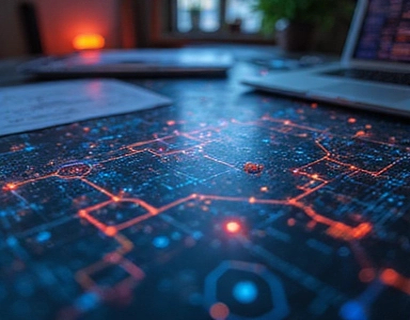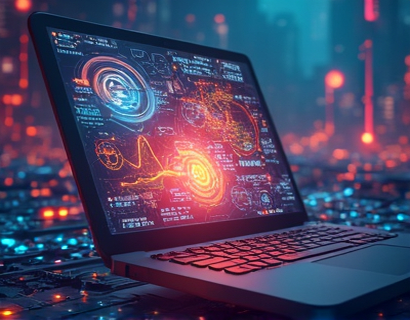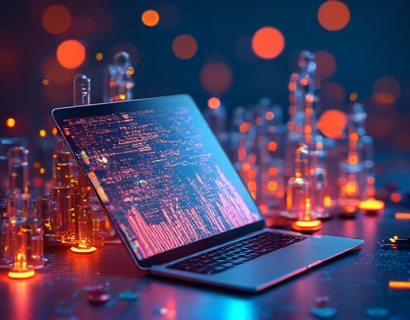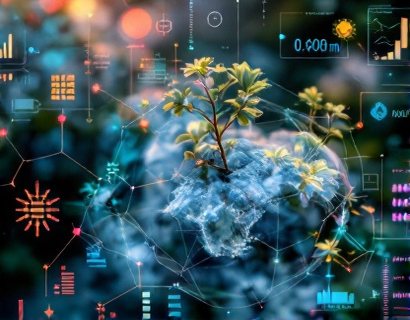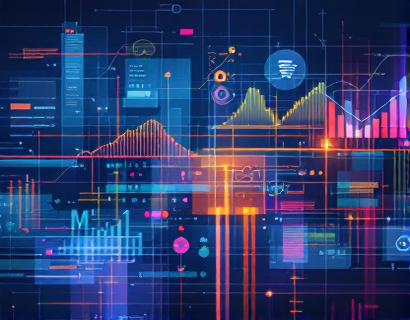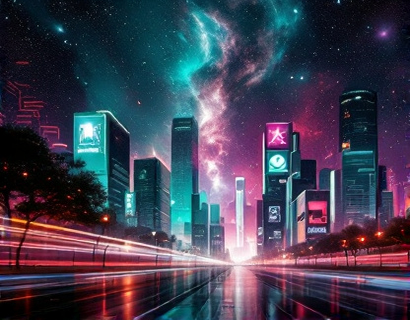NFTs: Revolutionizing Digital Ownership for Creators and Collectors in the Digital Ecosystem
The emergence of Non-Fungible Tokens, or NFTs, has brought about a paradigm shift in the way digital ownership is perceived and managed. This innovative technology has the potential to transform the digital landscape, offering creators and collectors unprecedented opportunities to craft, trade, and manage unique digital assets. In this article, we will delve into the world of NFTs, exploring how they are redefining digital ownership and scarcity, and unlocking endless possibilities in the digital realm.
To understand the impact of NFTs, it's essential to first grasp the concept of digital assets. Unlike traditional assets such as real estate or stocks, digital assets exist solely in the digital space. These can range from digital art and music to virtual real estate and in-game items. However, the challenge with digital assets has always been ensuring their uniqueness and verifying ownership. This is where NFTs come into play.
An NFT is a unique digital token stored on a blockchain, a decentralized and transparent ledger that records transactions across a network of computers. Each NFT represents a distinct digital asset, ensuring its scarcity and authenticity. The blockchain technology underlying NFTs provides an immutable record of ownership, making it nearly impossible to replicate or tamper with the ownership of a digital asset.
The creation of NFTs has opened up new avenues for digital creators. Artists, musicians, and writers can now tokenize their work, ensuring that they retain ownership and can monetize their creations in ways that were previously impossible. For instance, an artist can sell a digital painting as an NFT, guaranteeing that only one original exists and that the buyer has a verifiable proof of ownership. This not only protects the creator's rights but also adds a layer of value to the digital asset.
For collectors, NFTs offer a new way to acquire and own unique digital items. Unlike traditional collectibles, digital assets can be easily shared and appreciated without losing their value or uniqueness. Collectors can now build digital portfolios that are not only diverse but also secure, thanks to the transparency and security provided by blockchain technology. The ability to own and trade unique digital items has created a vibrant market, attracting enthusiasts and investors alike.
Fostering a Dynamic Community
The true power of NFTs lies in the communities they foster. Platforms that support NFT creation and trading are not just marketplaces; they are ecosystems that bring together creators, collectors, and enthusiasts. These communities serve as hubs for collaboration, innovation, and support, driving the future of digital ownership.
One of the key features of these communities is the ability to interact directly with creators. Artists can share their creative processes, receive feedback, and build a loyal following. Collectors can engage with the creators of the items they own, gaining insights into the inspiration and significance of their collections. This direct connection fosters a deeper appreciation and value for digital assets.
Moreover, these communities often host events, challenges, and exhibitions that showcase the best of digital creativity. Virtual art shows, music concerts, and literary readings are just a few examples of how NFTs are enriching the digital experience. These events not only provide exposure for creators but also create memorable experiences for collectors and fans.
Redefining Digital Ownership and Scarcity
One of the most significant impacts of NFTs is the way they redefine digital ownership and scarcity. In the traditional digital world, copies of files can be made infinitely without losing quality, making it challenging to establish ownership. NFTs change this by assigning a unique identifier to each digital asset, ensuring that only one person can own a particular token at a time.
This scarcity is what gives NFTs their value. A digital artwork that exists in multiple copies on the internet loses its uniqueness and, consequently, its value. By tokenizing a specific version of that artwork as an NFT, the creator can ensure that only one person owns the verified original. This not only protects the creator's intellectual property but also creates a new form of value in the digital space.
Furthermore, NFTs can include metadata that provides additional context to the digital asset. This metadata can include information about the creation process, ownership history, and even exclusive content. For example, an NFT of a digital painting might include a video of the artist discussing the inspiration behind the piece. This enriched context adds layers of value and authenticity, making NFTs more than just digital files.
Unlocking Endless Possibilities
The potential applications of NFTs extend far beyond art and collectibles. In the realm of gaming, NFTs can represent unique in-game items or characters, allowing players to own and trade these assets outside the game. This not only enhances the gaming experience but also creates new revenue streams for developers and players alike.
In the real estate sector, NFTs can be used to represent fractional ownership of properties, making real estate more accessible to a broader audience. This innovation can democratize investment in real estate, allowing individuals to own a fraction of a property and benefit from its appreciation.
The music industry is another area where NFTs are making waves. Artists can release exclusive tracks or behind-the-scenes content as NFTs, offering fans a unique way to support their favorite musicians. These digital collectibles can also include rights to future releases, creating a new model for artist-fan relationships.
Challenges and Considerations
While the potential of NFTs is vast, there are several challenges and considerations that need to be addressed. One of the primary concerns is the environmental impact of blockchain technology, particularly proof-of-work blockchains like Ethereum. The energy consumption associated with mining can be significant, raising questions about the sustainability of NFTs.
To mitigate this, the industry is moving towards more environmentally friendly blockchain solutions, such as proof-of-stake mechanisms. Additionally, platforms are exploring ways to offset the carbon footprint of NFT transactions, ensuring that the growth of this technology aligns with environmental goals.
Another consideration is the regulatory landscape. As NFTs gain mainstream attention, governments and regulatory bodies are starting to take notice. Clear guidelines and regulations will be essential to protect consumers, ensure fair trading practices, and prevent fraud.
Conclusion
NFTs are revolutionizing the way we think about digital ownership, offering creators and collectors unprecedented opportunities in the digital ecosystem. By ensuring uniqueness, verifying ownership, and fostering vibrant communities, NFTs are transforming the digital landscape. As the technology continues to evolve, it will be exciting to see how it shapes the future of creativity, ownership, and interaction in the digital world.








